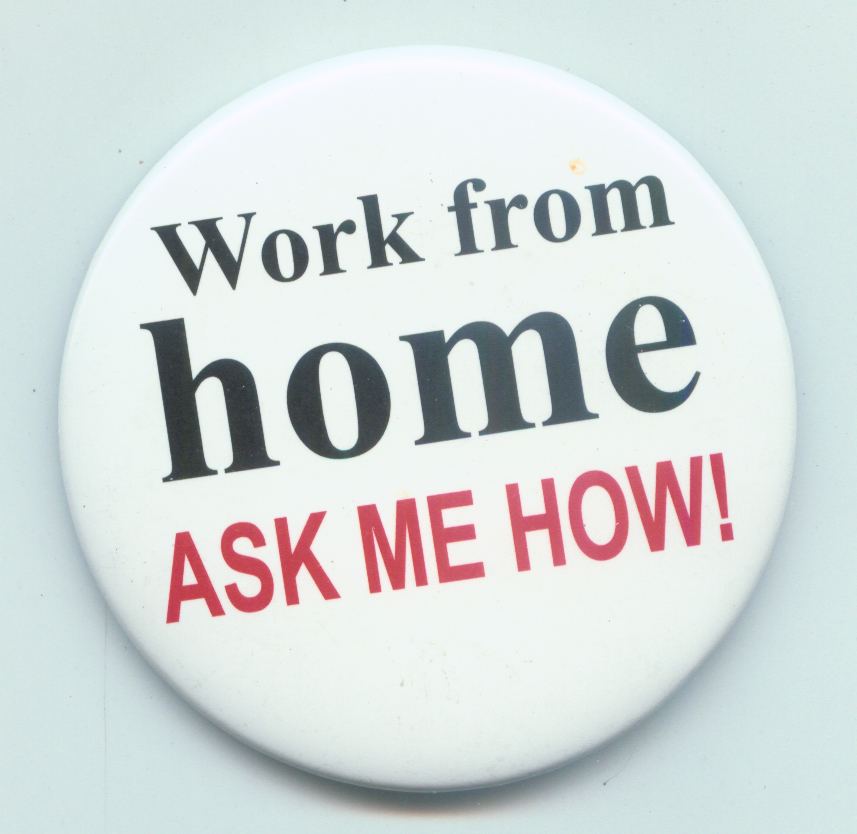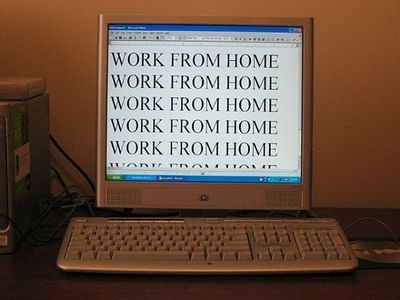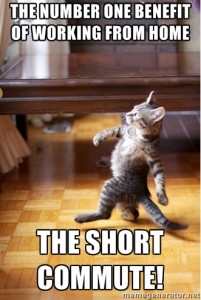
Patrick W. Rollens (LinkedIn & Twitter) arrived in the public sector after a career in journalism. As communications coordinator at the Village of Oak Park and advisory board member with ELGL, he draws upon his skills as a journalist to track emerging trends in communications and social media.
Yep, just what the headline says. During my career in the journalism industry, I worked from home for the better part of three years, and I’ve never worked harder in my life. That’s probably not a smart thing to say, since I know my boss reads elgl.org. The #WorkLifeBalance series is all about honesty, so I’ve got to come clean. Reflecting on my work environment as a journalist, the way of working is best qualified as results-oriented. I more or less made my own hours and worked days or weeks at a time without direct supervision. What mattered was not when or where I worked – but the resulting outcome of my work. These days were among the most productive of my career.
In this post, I’ll get into the benefits of a results-oriented work environment, as well as the potential pitfalls. Local gov has a grumpy relationship with anything that breaks the 8-to-5 workday. This must change, just as it has changed in the private sector over the last decade.

Work Like No One is Watching
Something that continually trips me up in the public sector is this notion of accountability, that we have to constantly monitor our employees to make sure they are doing the work. There is this tangible sense that if someone isn’t watching, everyone (from managers down to interns) will just kick back and play Candy Crush all day.

I have a hard time keeping a lid on my lack of sympathy for this notion, and it stems to my time in a results-oriented work environment. At the Chicago Tribune, I was issued a laptop, a digital camera and a Blackberry and told to go out and report the news. Later, this transitioned to a website administration role, but the idea was the same “You know the job,” my editor said, “So just do it.” I was part of a small team, all working independently and remotely, and if any one of us slacked off, the results would be immediately apparent by a dip in social media posts and web traffic, followed by a commensurate dip in revenue as our product lost value in the marketplace. This was unacceptable.
As a result, we worked harder than ever. My team was constantly in touch throughout the day via email and chat. The lack of proximity – we saw each other once a week in staff meetings – pushed us to work even harder. Nobody wanted to be seen as the weak link in the chain.
Set Your Own Goals
One benefit of a results-only work environment was that I had incredible freedom to set my own goals. My supervisors provided strategic leadership and staff management, and they also encouraged also me to carve out time during the week to pursue other projects for the newspaper. I can’t claim that I filled my weeks devising new ways of engaging readers and building revenue in a transforming industry, but I did have the opportunity to bring a few pet projects to fruition while juggling the demands of my position. A well-defined job, coupled with a results-oriented work environment, yields innovation.

Flexibility In the Extreme
A results-oriented workplace is defined by just that – results. This gives employees the opportunity to shift their schedules to accommodate all sorts of weekly tasks, as long as the job gets done. During my time working remotely for the Tribune, I didn’t have kids to take care of, but I was able to schedule my day so that I was winding down around 3:45 p.m., when my wife (a high school teacher) was getting home from work. That way I’d be able to run errands and make dinner with her in the evening – while still keeping my phone handy for emergency updates. Which brings me to my next point …

Powering Down
As anyone who has ever worked in a 21st century office environment will tell you, it’s hard to power down at the end of the day. It is doubly hard when you work remotely and have a home office that beckons 24 hours a day. Managers considering allowing employees to work a more flexible schedule should clarify exactly when the workday “ends” – by that, I mean a reasonable hour after which phones can go to voicemail and emails can sit unread. I’d like to say this is roughly 5 p.m., but in a true results-oriented work environment, it might be 10 p.m. or later. Figure out what works best for each employee or team, and then stick to the self-imposed stop to the workday.
Experimentation!
I didn’t just settle into this schedule – it was developed and modified over the course of many months of on-the-job experimentation. If you choose to explore your options with respect to results-oriented work, don’t feel like you’re stuck with the first option you come up with. Managers and employees can and should revise, tweak and fine-tune these programs so that they’re striking the right balance and keeping the entire operation moving along efficiently.

Your Help
Want to talk more about this important work-life balance tool? Tweet @PatrickWRollens using #ELGLWorkLife to keep the conversation going. If you’re interested in joining the conversation as a guest writer please contact Benjamin McCready at benm@elgl.org or Freida Edgette.[/vc_column_text][/vc_column][/vc_row]
